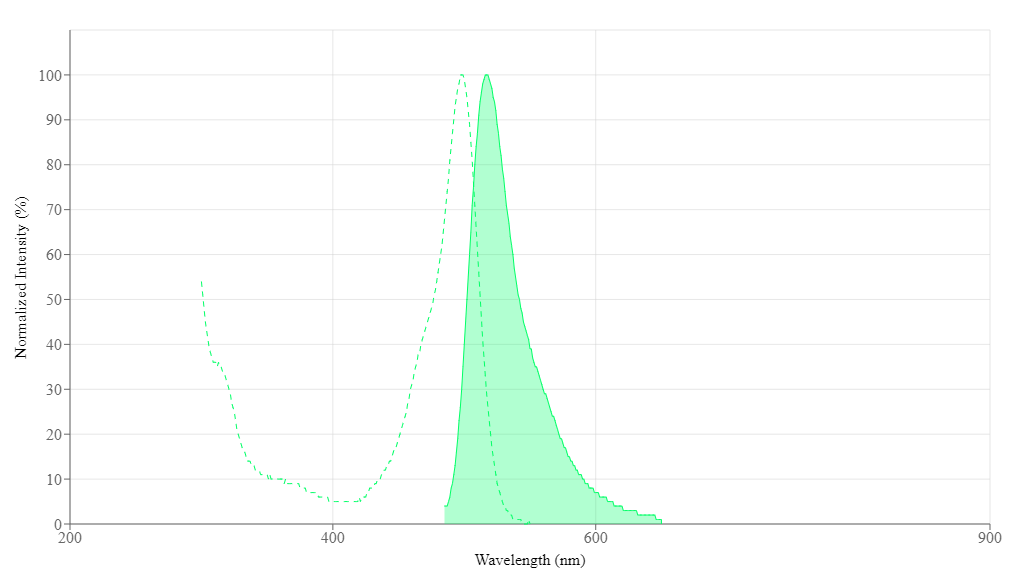CFSE
5-(and 6)-Carboxyfluorescein diacetate, succinimidyl ester; CAS 150347-59-4
CFSE (carboxyfluorescein diacetate succinimidyl ester) is a cell-permeable fluorescent dye that covalently labels intracellular proteins, enabling multi-generational cell proliferation tracking through progressive fluorescence dilution in flow cytometry.
- Cell Proliferation Tracking: Halves in fluorescence with each cell division
- Intracellular Protein Labeling: Cell-permeable dye covalently binds cytoplasmic proteins for long-term retention
- 488 nm Laser Excitation: Compatible with standard FITC channels in flow cytometry and microscopy
- Alternative to CMFDA: Superior stability and lower toxicity compared to traditional proliferation dyes


| Catalog | Size | Price | Quantity |
|---|---|---|---|
| 22022 | 25 mg | Price |
Physical properties
| Molecular weight | 557.46 |
| Solvent | DMSO |
Spectral properties
| Excitation (nm) | 498 |
| Emission (nm) | 517 |
Storage, safety and handling
| H-phrase | H303, H313, H333 |
| Hazard symbol | XN |
| Intended use | Research Use Only (RUO) |
| R-phrase | R20, R21, R22 |
| Storage | Freeze (< -15 °C); Minimize light exposure |
| UNSPSC | 12352200 |
| CAS | 150347-59-4 |
Documents
Contact us
| Telephone | |
| Fax | |
| sales@aatbio.com | |
| International | See distributors |
| Bulk request | Inquire |
| Custom size | Inquire |
| Technical Support | Contact us |
| Request quotation | Request |
| Purchase order | Send to sales@aatbio.com |
| Shipping | Standard overnight for United States, inquire for international |
Page updated on September 30, 2024

